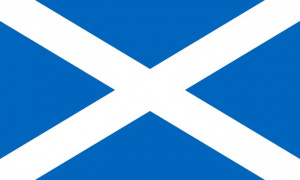Language/Scottish-gaelic/Grammar/Definite-and-Indefinite-Articles
| ◀️ Introducing Yourself — Previous Lesson | Next Lesson — Noun Gender and Plurals ▶️ |
Introduction[edit | edit source]
Welcome to the "Complete 0 to A1 Scottish Gaelic Course". In this lesson, we will focus on the basics of Scottish Gaelic grammar, specifically the use of definite and indefinite articles with nouns. By understanding the differences between these articles, you will be better equipped to use them in context and improve your overall Gaelic proficiency.
Definite Articles
Definite articles are used to refer to specific nouns, which are either known to the listener or reader, or have been previously mentioned in the conversation or text. In Scottish Gaelic, the definite article is typically translated to "the" in English.
Here are some examples of definite articles in Gaelic:
| Scottish Gaelic | Pronunciation | English |
|---|---|---|
| Am balach | am pal-ach | The boy |
| An cat | an kaht | The cat |
| A' ghrian | ah gree-an | The sun |
As you can see from these examples, the definite article takes different forms depending on the grammatical gender of the noun. Masculine nouns use "am", feminine nouns use "an", and plural and non-gendered nouns use "na".
Indefinite Articles
Indefinite articles are used to refer to non-specific or general nouns, which means that the noun is not specifically identified, but instead referred to in a more general sense. In Scottish Gaelic, the indefinite article is typically translated to "a" or "an" in English.
Here are some examples of indefinite articles in Gaelic:
| Scottish Gaelic | Pronunciation | English |
|---|---|---|
| Balach | pal-ach | A boy |
| Cat | kaht | A cat |
| Griogal | gree-oh-gal | An orange |
Unlike definite articles, the indefinite article remains the same regardless of the grammatical gender of the noun. It is always "a" or "an".
Exceptions to the Rule
As with any language, there are always exceptions to the rules. In Scottish Gaelic, there are a few exceptions when it comes to the use of definite and indefinite articles.
One common exception is with certain idiomatic expressions, where the article might not be used in the same way as with regular nouns. Here are a few examples:
- Tha mi anns an taigh - I am in the house (lit. "I am in house")
- Tha e air an t-sìde - It is about the weather (lit. "It is on the weather")
- An do tha e - Did he? (lit. "The did he")
As you can see from these examples, the use of the article is not always straightforward and can be influenced by various factors.
Conclusion
In conclusion, understanding the use of definite and indefinite articles is a key component of Scottish Gaelic grammar. By paying attention to the gender of the noun and the context in which it is used, you will be better equipped to use these articles correctly in your speech and writing.
Remember, practice makes perfect, and the more you use these articles in context, the easier it will become.
We hope this lesson has been helpful in your language learning journey. Be sure to check out other lessons in the "Complete 0 to A1 Scottish Gaelic Course" for more grammar and vocabulary topics. Happy learning!
Other Lessons[edit | edit source]
- Negation
- Plurals
- Using Prepositions
- Linking with Conjunctions
- Noun Gender and Plurals
- How to Use Be
- Describing with Adjectives
- Future Tense
- Personal Pronouns
| ◀️ Introducing Yourself — Previous Lesson | Next Lesson — Noun Gender and Plurals ▶️ |

